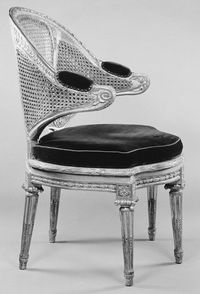
Bell-shaped salt
T. S., London
An item at Metropolitan Museum of Art
This bell salt was so named from the overall bell-like profile of the object as well as of each of the two superimposed sections. Salt was not an easy material to acquire in Europe. In England, it was obtained by the evaporation of seawater. Salt pans were located in towns beside the sea, where they could be flooded and carefully tended while the seawater evaporated. In parts of Europe, rock salt was extracted from mountainsides, where its presence was evidence that the area was once under sea. This bell salt is comprised of two containers and a pepper shaker. The unidentified maker's mark is known from other small household objects such as cups and salts dating to the early seventeenth century. The decoration is in reserve on a ring-punched ground, and consists of leaves of several types set in roundels or lozenges or elsewhere just set into the ring-punched ground. The effect is much like linen damask, with its contrast of shiny and dulled areas.
European Sculpture and Decorative Arts
An exhibit at Metropolitan Museum of Art
The fifty thousand objects in the Museum's comprehensive and historically important collection of European sculpture and decorative arts reflect the development of a number of art forms in Western European countries from the early fifteenth through the early twentieth century. The holdings include sculpture in many sizes and media, woodwork and furniture, ceramics and glass, metalwork and jewelry, horological and mathematical instruments, and tapestries and textiles. Ceramics made in Asia for export to European markets and sculpture and decorative arts produced in Latin America during this period are also included among these works.




